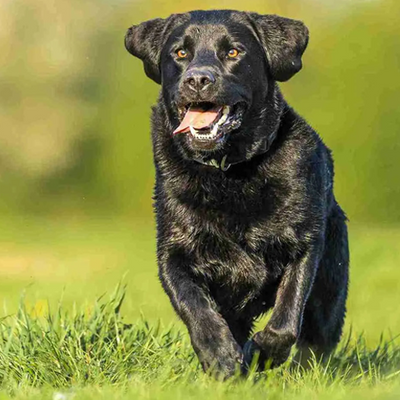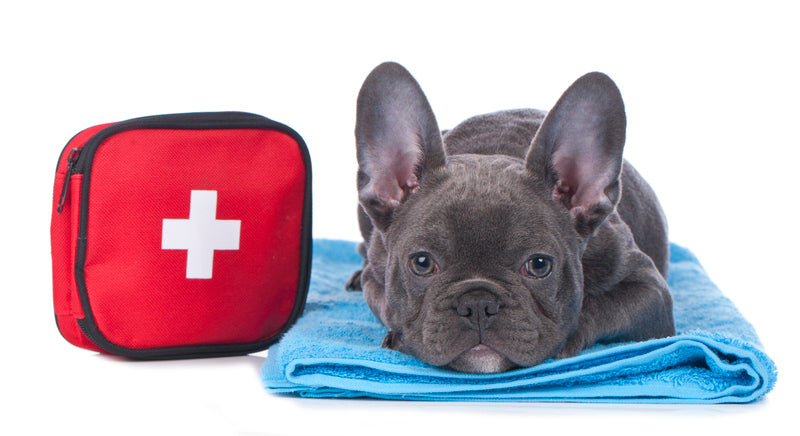Preparing for the Unexpected: The Dog Owner's Emergency Kit
Are You Ready? The Unspoken Responsibility of Every Dog Owner
Do you ever wonder what would happen to your dog if disaster struck tomorrow? We love our furry family members unconditionally. We feed them, walk them, and shower them with affection. But when the unexpected happens – a sudden storm, an evacuation order, a power outage –are you truly prepared to keep them safe? Most of us have a basic plan for ourselves. We might have some extra water, a flashlight. But our dogs? They depend on us entirely. This isn't just about survival; it's about fulfilling our deepest commitment to these loyal companions. It’s about being ready when they need us most.
The Call to Self-Reliance: A Patriotic Approach to Pet Preparedness
Beyond Basics: Why a "Go-Bag" Isn't Just for You
In America, we value self-reliance. We believe in being ready for anything. This spirit extends to every aspect of our lives, including the care of our pets. Having an emergency kit for your dog isn’t just a good idea; it’s an act of 'responsible citizenship'. When you’re prepared, you ease the burden on emergency services. You ensure your pet doesn't become a statistic or a strain on overwhelmed shelters. It's not about fear; it's about foresight. It's about taking proactive steps.
We hear about emergency preparedness constantly, but how often does that advice specifically include our dogs? Standard emergency kits often miss critical pet-specific items. A human "go-bag" won't cut it. Your dog needs their own dedicated resources. They need a plan tailored to their unique needs. This specialized preparation means everything. It defines your commitment.
The American Spirit: Facing Adversity, Protecting Our Own
From the pioneers who tamed the wilderness to the communities that rebuild after devastating floods, the American narrative is one of resilience. We face challenges head-on. We protect our families. Our dogs are family. Therefore, preparing for their safety during an emergency is an extension of this fundamental American value. It shows strength. It shows compassion. It shows that in times of crisis, we do not leave anyone behind, especially our most vulnerable, four-legged loved ones.
This isn't just about individual responsibility. It's about community resilience. When every pet owner is prepared, our communities are stronger. Fewer pets are abandoned. Fewer resources are stretched thin. Your individual preparedness contributes to the greater good. It is a quiet act of patriotism. It reflects our core values.
Assembling the Ultimate Pet Emergency Kit: More Than Just Food and Water
Building an emergency kit for your dog isn’t a one-and-done task. It’s an ongoing project, a living document. This kit needs to be comprehensive. It needs to be accessible. Most importantly, it needs to be maintained. Let's break down what truly goes into the ultimate dog owner's emergency kit. This is your pet's lifeline.

The Essentials: Food, Water, and a Week's Supply
Most experts recommend a three-day supply of food and water for human kits, but for dogs, we aim higher: a full week's supply. Transportation during a regional disaster might be delayed. Shelters might be overcrowded. Your dog’s regular food, stored in an airtight, waterproof container, is crucial to prevent digestive upset during a stressful time. Rotate this supply every few months to ensure freshness. Don't forget non-spill bowls. A ---'collapsible silicone bowl' is lightweight and takes up minimal space.
Water is life. Store at least one gallon of water per dog per day. This is non-negotiable. You can also include pet-safe water purification tablets (available at most outdoor supply stores) as a backup. Just as important as the water itself is a manual can opener if your dog eats wet food. All these supplies should be in a durable, easy-to-carry backpack or container labeled "PET EMERGENCY".
Critical Documents: Vet Records, IDs, and Proof of Ownership
This is the paper trail that proves your dog is yours and ensures their health needs are met. Keep these documents in a waterproof, fireproof envelope inside your kit. You should have:
- Current photographs of your dog (several angles, with and without you).
- Vaccination records (especially Rabies).
- Microchip number and registration information.
- A copy of the adoption papers or purchase contract (proof of ownership).
Also critical are medication instructions and a short summary of your dog's medical history, including any known allergies or chronic conditions. If you have to shelter your pet with an unfamiliar vet or volunteer, this binder of information is their voice. Remember to include contact information for your regular veterinarian and an out-of-state emergency contact person who won't be caught in the same disaster area.
Comfort & Care: Medications, First Aid, and Familiar Scents

An emergency is traumatic for dogs. Familiarity provides comfort. Include a small blanket or an old t-shirt that smells like you and your home. This acts as a powerful, non-medicinal calming tool. You may also want to bring a natural calming supplement to help reduce your dog's anxiety.
For medical care, you need a basic "canine first aid kit". This should include antiseptic wipes, gauze, adhesive tape (vet wrap), blunt-tipped scissors, and a muzzle (even a friendly dog might bite when in pain or extreme fear).
- Medication is essential: Store a two-week supply of any prescription medications your dog takes regularly. This means getting refills early. Keep them in their original, labeled containers and check the expiration dates monthly.
- Additional recommendations: We also suggest including a pet-safe insect repellent and, perhaps, a small toy for momentary distraction.
Safety & Control: Leashes, Collars, and Restraint Options
In an evacuation scenario, control is paramount. Chaos can lead to panic. Every dog in your family needs a 'sturdy collar with up-to-date ID tags' (including your emergency contact's number). Include an extra leash and a harness. A flat leash is generally safer than a retractable one in crowded, unpredictable situations.
For transport, include a crate or carrier. If you use a soft-sided carrier, ensure it’s durable. The carrier should be large enough for your dog to stand up and turn around in. Always keep a "Rescue Alert" sticker on your main door, indicating the number of pets inside your home. If you are forced to leave them behind (a worst-case scenario), this sticker alerts first responders that animals need rescue.
Waste & Sanitation: Because Disasters Don't Stop Doggie Business
Maintaining hygiene is crucial to prevent the spread of disease in cramped or stressful conditions. Your kit must include several rolls of waste bags and paper towels. A small container of enzyme-based cleaner or simple bleach wipes can help clean a crate or a temporary shelter space. Cat litter is an excellent emergency option for dogs who are crate-trained, providing an absorbent layer if they cannot be taken outside.
Tailoring Your Plan: Common American Disasters and Your Dog
American geography presents varied threats. Your preparedness plan must be tailored to the disasters most likely to strike your region. A Floridian facing a hurricane has different immediate needs than a Kansan preparing for a tornado. True self-reliance means preparing for the specific, predictable threats you face.
Tornado Alley & Hurricanes: Rapid Evacuation Strategies
Tornadoes and Hurricanes demand speed. In the case of a tornado, you may have only minutes. Keep your pet emergency kit, carrier, and leash in an easily accessible, dedicated spot—ideally near your designated shelter area or main exit. Practice getting your dog into their carrier quickly. For hurricanes, the threat is usually flooding, meaning mandatory evacuation. Always have a list of pet-friendly hotels or shelters outside your immediate area. Never assume a human shelter will accept pets; always check beforehand.
Blizzards & Winter Storms: Shelter-in-Place Safely

The primary threat here is isolation and power loss. If you are sheltering in place, ensure you have enough fuel or backup heat to keep your dog warm. Smaller dogs, especially those with thin coats, can suffer from hypothermia. Include a dog coat or extra blankets in your kit. If you can, bring your dog's bed which will not only make it feel more comfortable, but can help keep it warm as well.
Be sure you have a shovel and an established, cleared path for bathroom breaks to prevent injury in deep snow.
Wildfires & Earthquakes: Unique Challenges, Urgent Responses
- Wildfires require the fastest evacuation possible. The air quality is often the first issue. Include a pet-safe air filter (a bandana or cloth to cover their nose and mouth can offer minimal protection) if smoke is an issue.
- Earthquakes are unpredictable; the danger is falling debris. Have a plan to immediately secure your dog under a sturdy structure (a strong table or desk) until the shaking stops. Always check paws for cuts after an earthquake, as glass and debris are common hazards.
Practice Makes Perfect: Integrating Your Dog into Emergency Drills
A plan is useless if it hasn't been tested. You practice fire drills with your family; do the same with your dog.
- Practice getting them into their carrier with speed, using high-value treats to make it a positive experience.
- Practice loading them into the car quickly. This repetitive training is an investment that pays off exponentially during a high-stress moment. A trained dog is a safe dog.
Designating a Guardian: Your Dog's Backup Plan
What if you are not home when disaster strikes? Identify a trusted friend, neighbor, or family member who lives close by and is willing to be your dog's designated guardian. This person must have a key to your home and know where the pet's "go-bag" is located. Give them a copy of your pet's vaccination records and let your veterinarian know this person is authorized to seek emergency care for your dog in your absence. This network of care is true preparedness.
Conclusion: Your Preparedness, Their Protection
Preparedness is not just a suggestion; it is the ultimate act of loyalty we can offer our dogs. By embracing the principles of self-reliance and forethought, we ensure that when the chaos of an emergency descends, we are a steady, secure anchor for our pets. Your comprehensive emergency kit is more than just supplies; it is peace of mind. **Don't wait until the warning sirens blare. Take action today. Assemble your kit, make your plan, and honor your commitment to your furry family.
Frequently Asked Questions (FAQs)
Q1. How often should I check and refresh my dog’s emergency kit?
You should check your kit at least twice a year (when you change your clocks for daylight savings is a good reminder) to rotate food, water, and check medication expiration dates. Check the size of collars and harnesses monthly, especially for growing puppies or senior dogs.
Q2. What is the most common reason pets get separated from owners during a disaster?
The most common reasons are lack of proper identification (microchips, updated tags) and panic during sudden evacuation. Having a sturdy leash and carrier immediately available, along with redundant IDs, drastically improves the chance of reunion.
Q3. Can I rely on emergency shelters to take my pet?
No, never rely on this assumption. Standard human emergency shelters often cannot accept pets due to health regulations. Always research pet-friendly hotels, boarding facilities, or friends/relatives outside your immediate area, and have these contacts pre-written in your kit.
Q4. Should I include a toy in my kit, or is that unnecessary?
Yes, you should include a small, durable, familiar toy. In a high-stress situation, a familiar comfort item can significantly reduce your dog’s anxiety and distract them from the surrounding chaos. Choose one that takes up little space.
Q5. Why is it important to have an out-of-state emergency contact?
Local phone lines and cell towers can be overwhelmed or shut down during a regional disaster. An out-of-state contact is often easier to reach and can serve as a central communication hub for you, family members, and the pet guardian.







0 comments